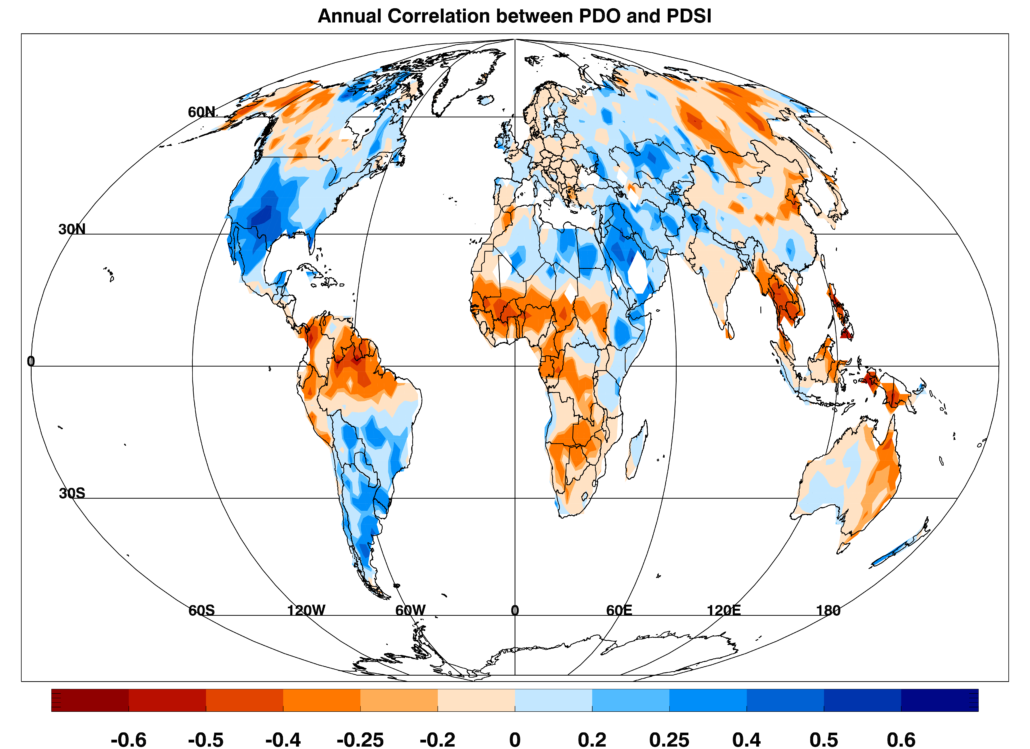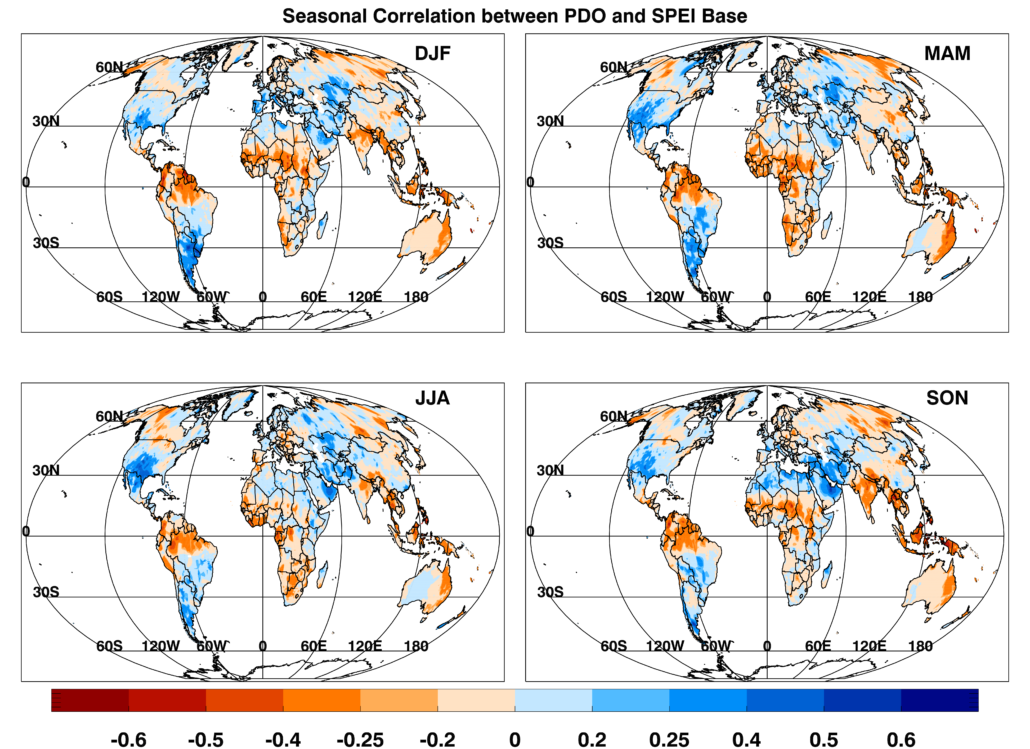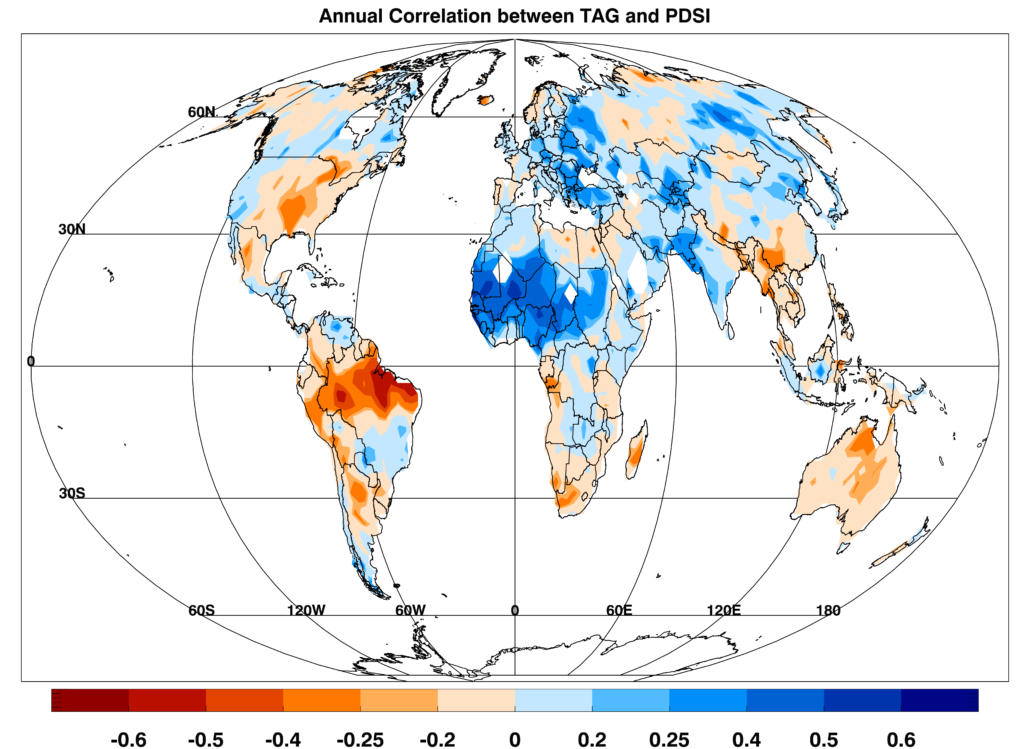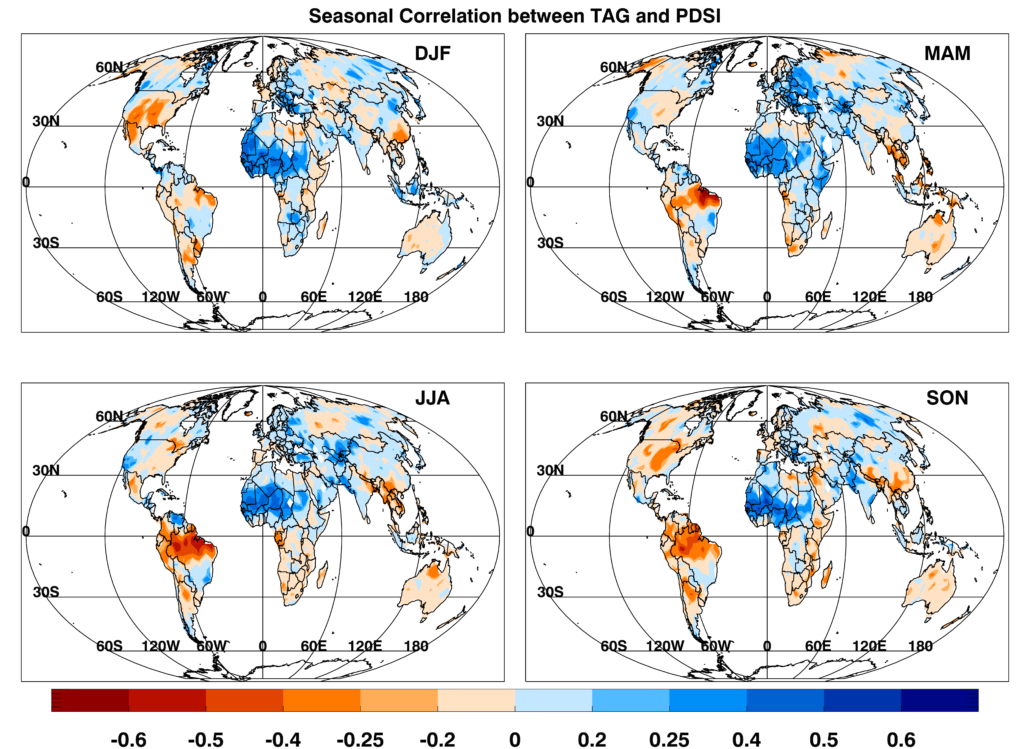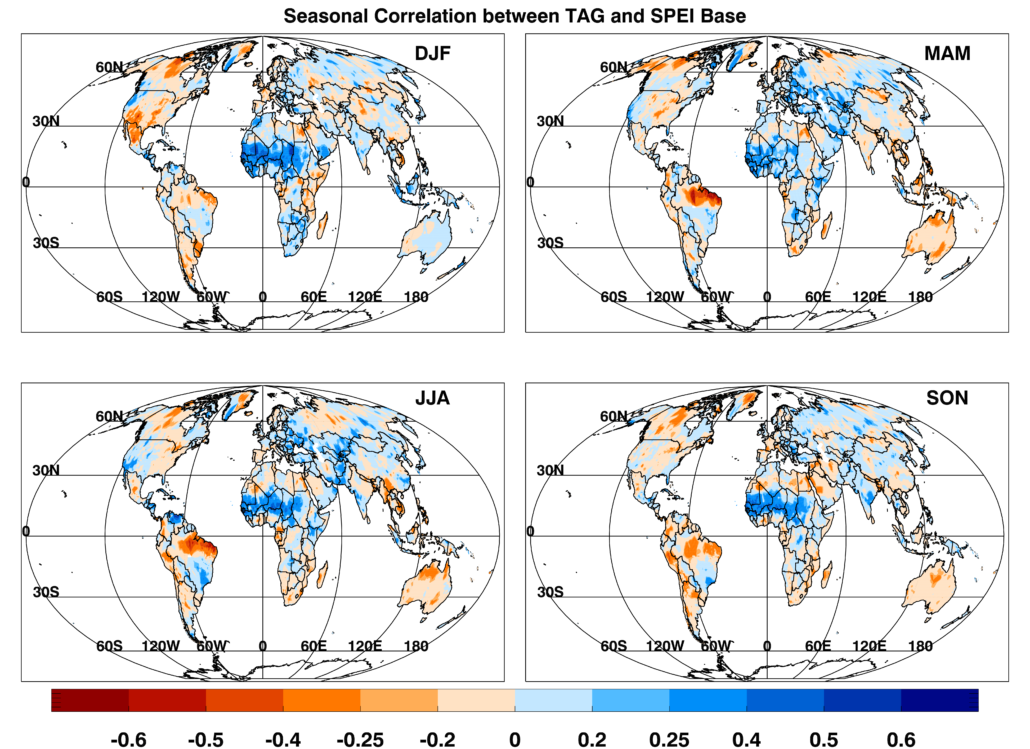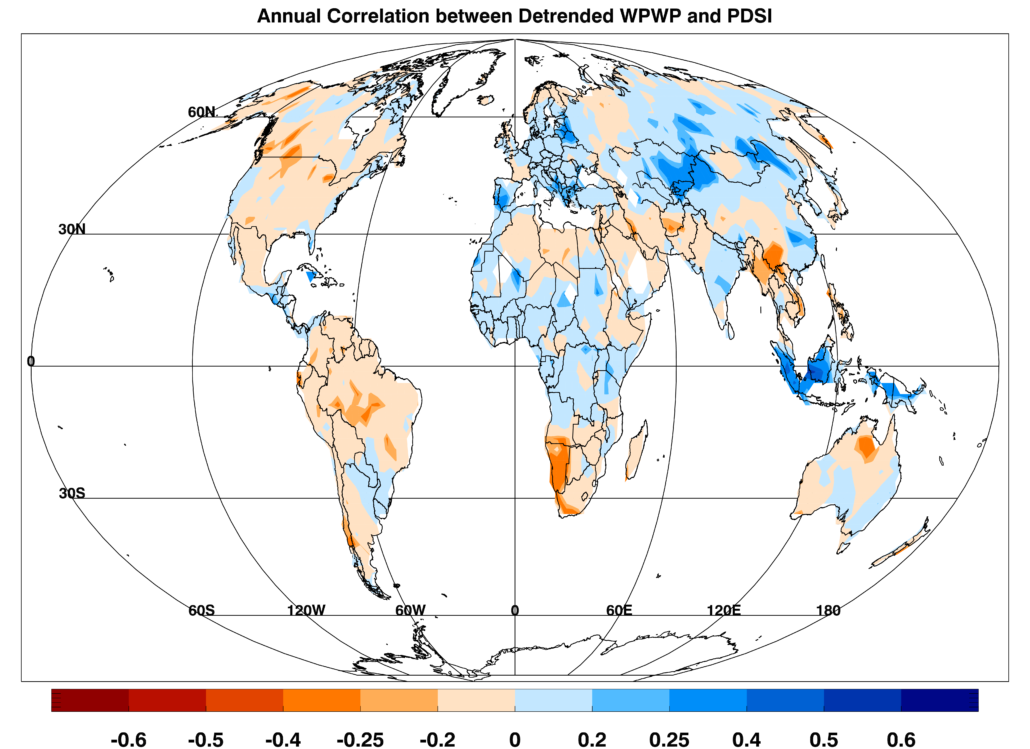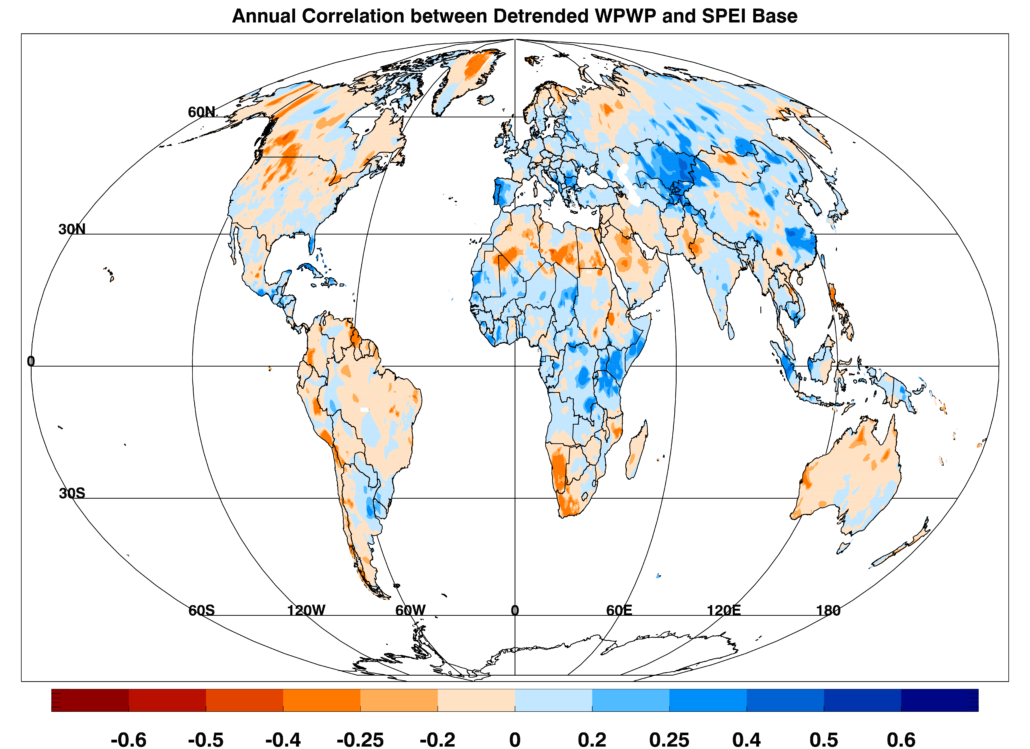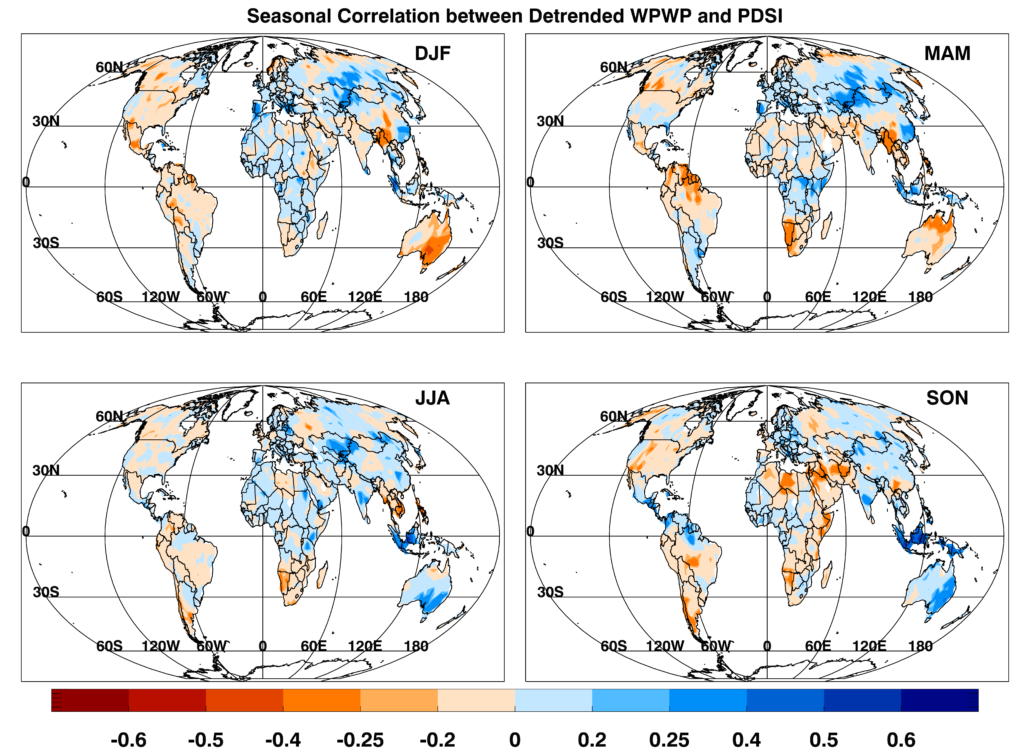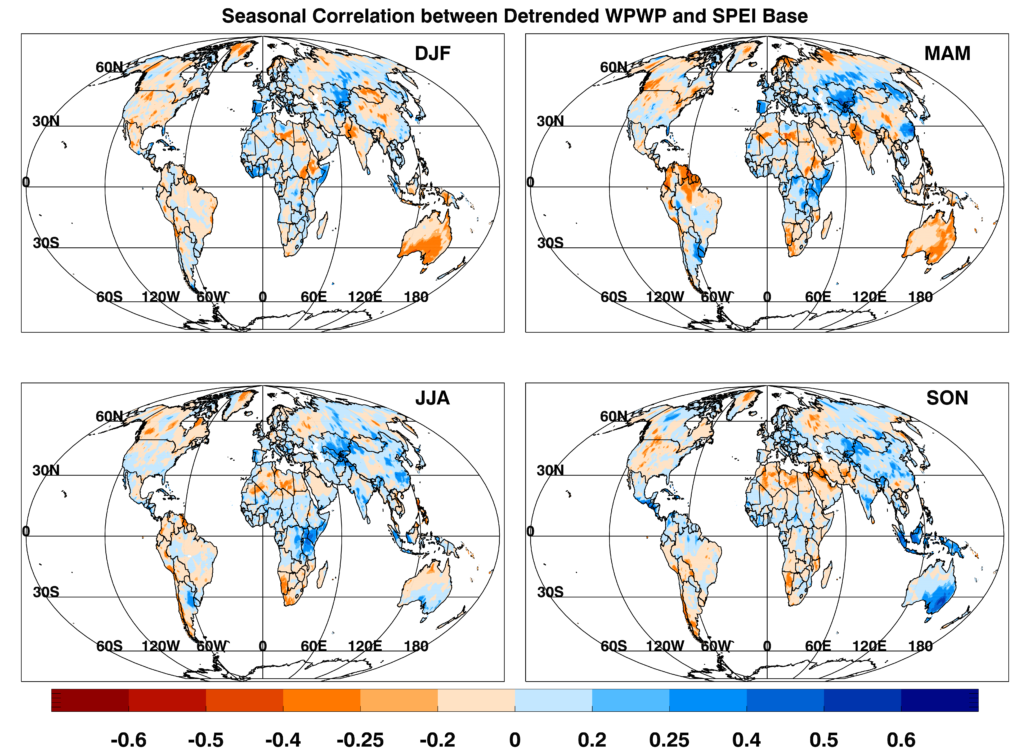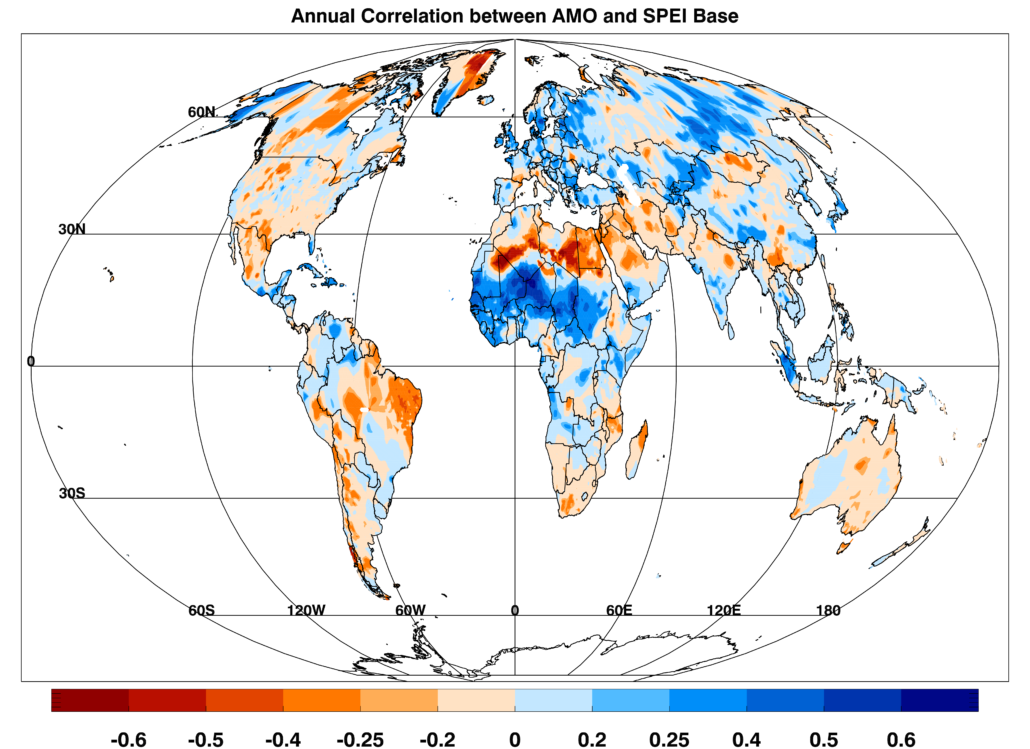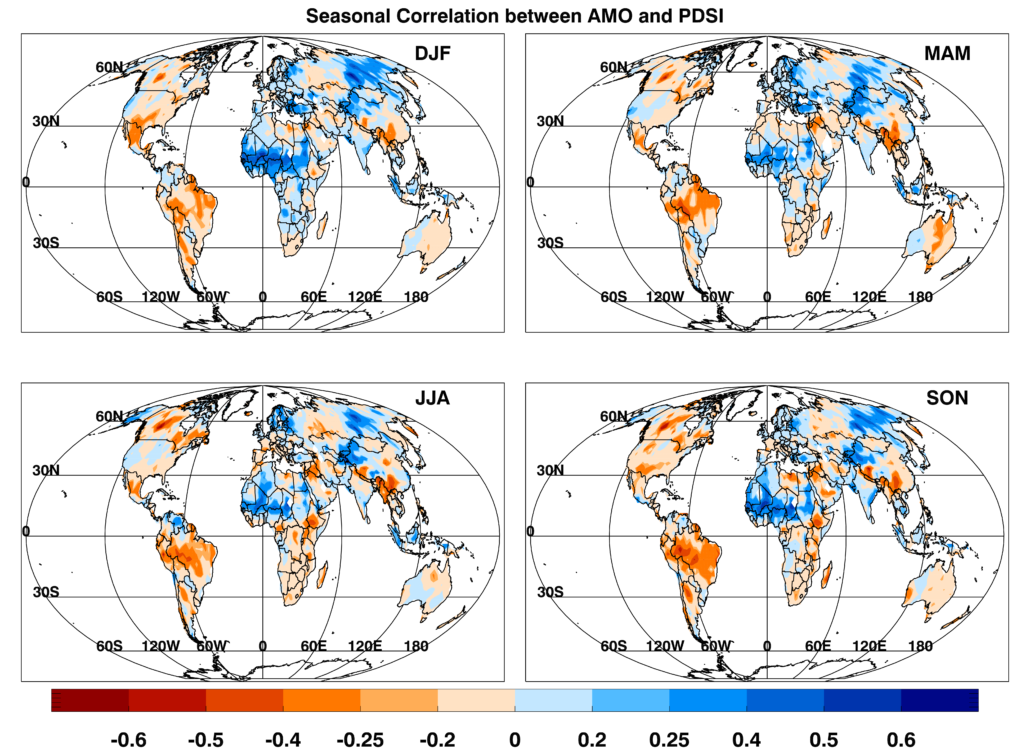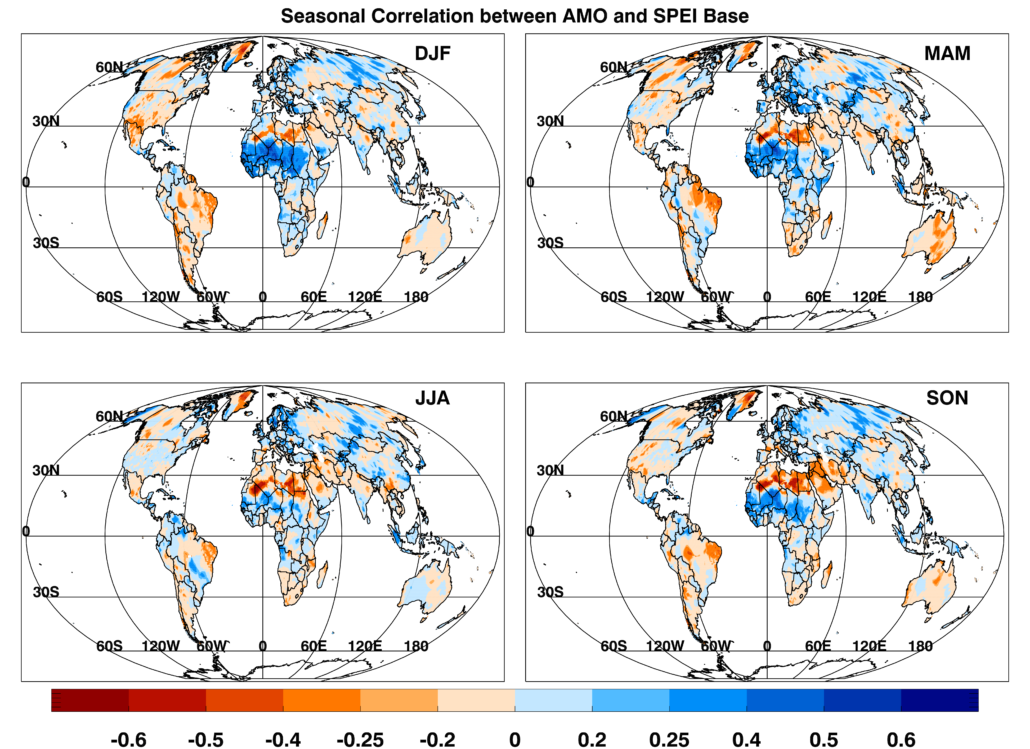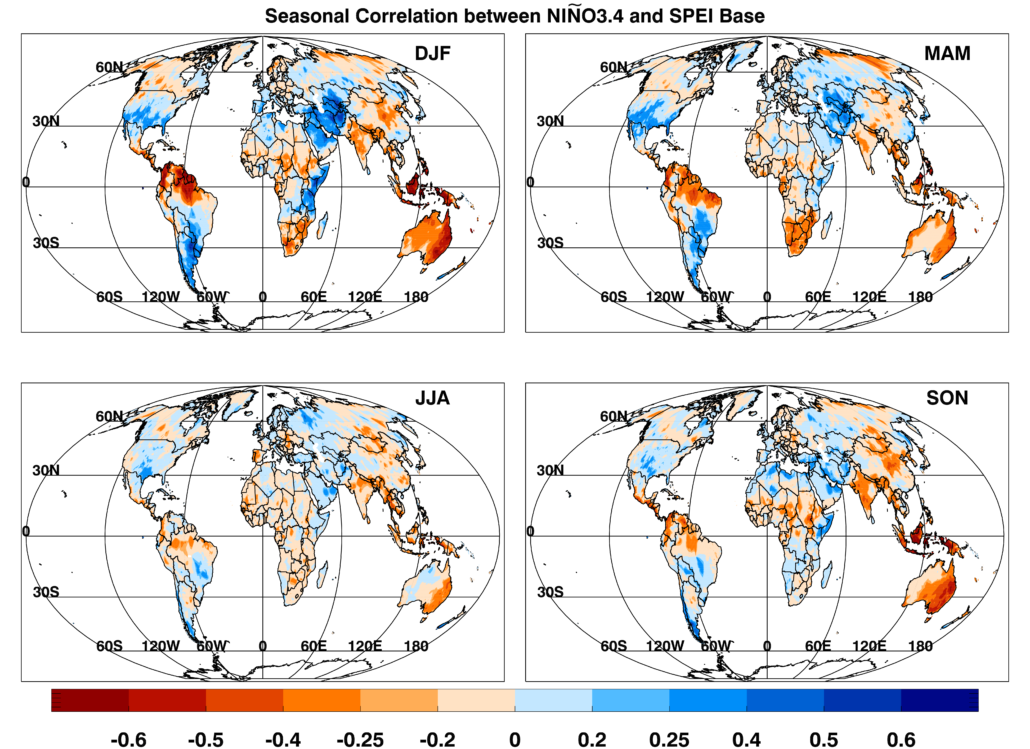We use two indices derived from gridded precipitation and temperature to estimate associations between DCV phenomena and worldwide dryness/wetness. These indices are the Self Calibrated Palmer Drought Severity Index (PDSI) and the Standard Precipitation-Evapotranspiration Index (SPEIbase). The PDSI data used are from NCAR and are from January 1951 through December 2014 (Dai et al., 2004), (Dai, 2011a), and (Dai, 2011b). The PDSI is explicitly inclusive of the atmospheric and soil moisture in the water balance and is available on a coarse global resolution of 2.5° x 2.5°. The dataset is only updated every few years, with the last update through December 2015.
The SPEIbase data are from CSIC and are from January 1951 through December 2015 on a global resolution of 1° x 1° (Vicente-Serrano et al., 2010). The SPEI is calculated by two different methods, one using the Penman-Monteith potential evapotranspiration (PET) equation (SPEIbase), and one using the Thornthwaite PET equation (SPEI). The SPEIbase requires more input parameters, which are not always available at the most current time and, therefore, is best suited for long-term climatological analysis. The SPEI only requires basic input parameters which are readily available at the current time, so it is better suited for use in present conditions. Accordingly, PDSI and SPEIbase correlations are used to display past conditions, and SPEI will be used for present conditions. Both versions — SPEIbase and SPEI — are calculated at different timescales. A thorough analysis was carried out of global correlations between the PDSI and different timescales of SPEIbase to determine the timescale with the best comparison and equivalency to the PDSI. SPEIbase calculated at the 9-month time-scale resulted in the strongest global correlations, and was used for the correlation maps shown here.
Annual and seasonal global correlations between DCV indices and the two drought indices can be displayed. Any correlation above/below +/- 0.25 is significant at the 95% significance threshold using a t-test score.
Choose a DCV phenomenon to display correlation maps:
PDO and Dryness/Wetness Correlations
Annual and seasonal correlation maps between the Pacific Decadal Oscillation (PDO) and PDSI from 1951 to 2014, and SPEIbase from 1951 to 2015 are shown.
Positive correlation (blue) result from either positive PDO and wetness, or negative PDO and dryness. Negative correlation (red) result from either positive PDO and dryness, or negative PDO and wetness. Seasons are defined as December-January-February (DJF), March-April-May (MAM), June-July-August (JJA), and September-October-November (SON).
TAG and Dryness/Wetness Correlations
Annual and seasonal correlation maps between the tropical Atlantic sea-surface temperature gradient (TAG) variability and PDSI from 1951 to 2014, and SPEIbase from 1951 to 2015 are shown.
Positive correlation (blue) result from either positive TAG and wetness, or negative TAG and dryness. Negative correlation (red) result from either positive TAG and dryness, or negative TAG and wetness. Seasons are defined as December-January-February (DJF), March-April-May (MAM), June-July-August (JJA), and September-October-November (SON).
WPWP and Dryness/Wetness Correlations
Annual and seasonal correlation maps between the detrended West Pacific Warm Pool (WPWP) index and PDSI from 1951 to 2014, and SPEIbase from 1951 to 2015 are shown.
Positive correlation (blue) result from either positive WPWP and wetness, or negative WPWP and dryness. Negative correlation (red) result from either positive WPWP and dryness, or negative WPWP and wetness. Seasons are defined as December-January-February (DJF), March-April-May (MAM), June-July-August (JJA), and September-October-November (SON).
EIWP and Dryness/Wetness Correlations
Annual and seasonal correlation maps between the detrended East Indian Warm Pool (EIWP) and PDSI from 1951 to 2014, and SPEIbase from 1951 to 2015 are shown.
Positive correlation (blue) result from either positive EIWP and wetness, or negative EIWP and dryness. Negative correlation (red) result from either positive EIWP and dryness, or negative EIWP and wetness. Seasons are defined as December-January-February (DJF), March-April-May (MAM), June-July-August (JJA), and September-October-November (SON).
AMO and Dryness/Wetness Correlations
Annual and seasonal correlation maps between the Atlantic Multidecadal Oscillation (AMO) and PDSI from 1951 to 2014, and SPEIbase from 1951 to 2015 are shown.
Positive correlation (blue) result from either positive AMO and wetness, or negative AMO and dryness. Negative correlation (red) result from either positive AMO and dryness, or negative AMO and wetness. Seasons are defined as December-January-February (DJF), March-April-May (MAM), June-July-August (JJA), and September-October-November (SON).
Niño3.4 and Dryness/Wetness Correlations
Annual and seasonal correlation maps between the Niño3.4 index and PDSI from 1951 to 2014, and SPEIbase from 1951 to 2015 are shown.
Positive correlation (blue) result from either positive Niño3.4 and wetness, or negative Niño3.4 and dryness. Negative correlation (red) result from either positive Niño3.4 and dryness, or negative Niño3.4 and wetness. Seasons are defined as December-January-February (DJF), March-April-May (MAM), June-July-August (JJA), and September-October-November (SON).
Major conclusions of these and other analyses are:
- Positive and negative phases of DCV phenomena – the PDO, the TAG variability, the WPWP and EIWP variability, and El Niño-La Niña variability – are associated with substantial and significant, annual and seasonal, worldwide dryness and wetness. These associations are physically consistent with precipitation and temperature anomalies associated with the DCV phenomena. Together, these associations indicate that worldwide dry and wet epochs are associated with DCV phenomena, with droughts and pluvials or various severities connected to amplitudes and phases of DCV phenomena.

